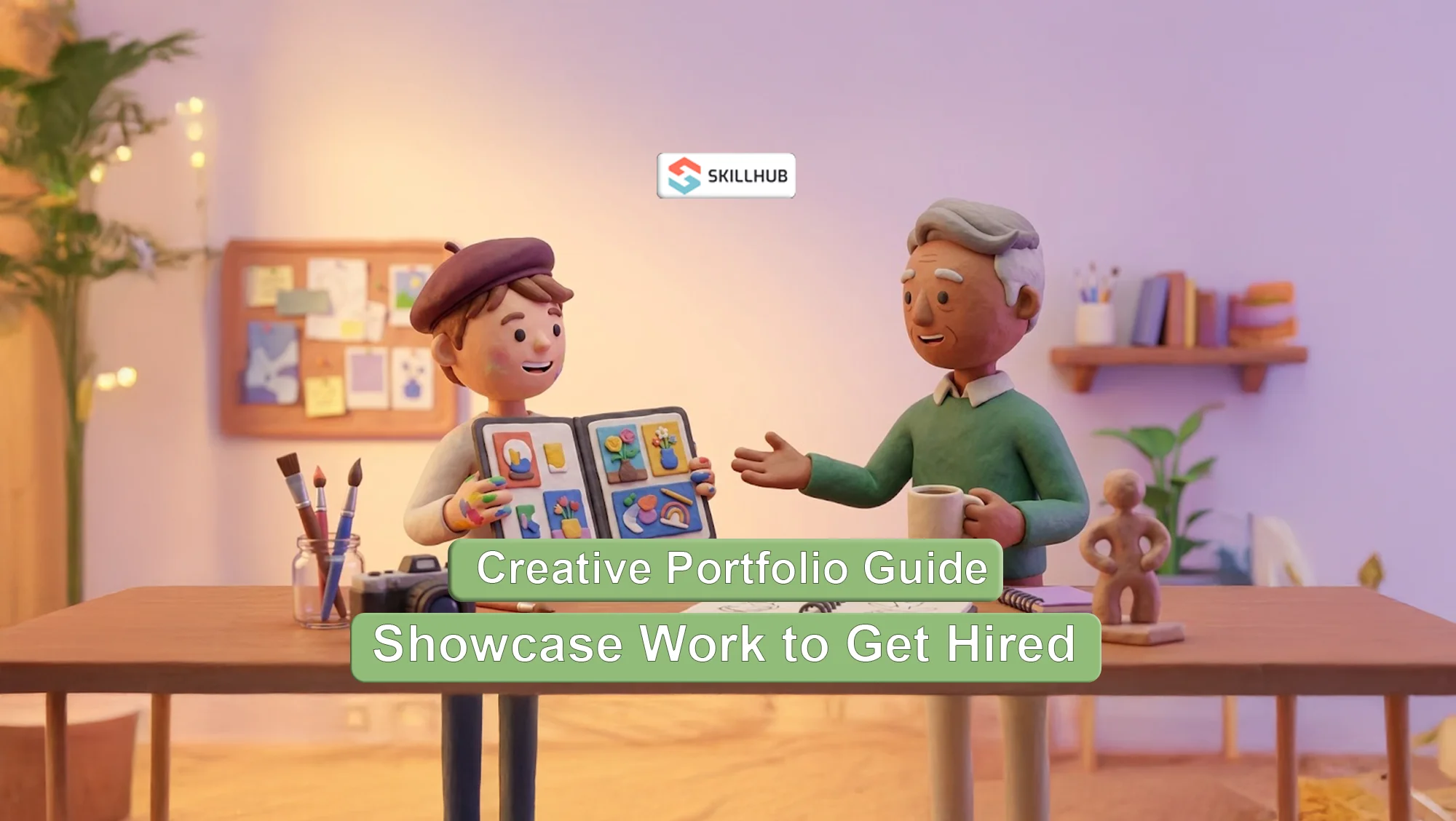How to List Work Experience on a Resume: A Guide to Writing Your Career Story

The Work Experience section is not just a part of your resume; it is the entire engine. It is the core evidence used to justify everything you claim in your summary and skills sections. Yet, it is the place where the vast majority of job seekers fail. Most resumes read like a passive job description, a boring list of "responsibilities included..." This approach is a strategic catastrophe. It forces the recruiter to guess what you actually accomplished. A modern, effective resume does not list duties; it proves value.
This section is your primary sales pitch. It's your opportunity to tell a compelling story of your professional growth, your ability to solve problems, and your direct impact on the bottom line. If your opening summary is the "hook," your experience section is the "proof." This guide will provide a definitive framework for transforming your experience section from a passive list into a powerful narrative of quantifiable achievements.
This is the most critical part of how to write a resume, and mastering it is non-negotiable.
The Foundational Shift: Duties vs. Achievements
Before you write a single bullet point, you must internalize one concept: a duty is what you were supposed to do, while an achievement is what you actually did with that responsibility.
- Duty: "Responsible for managing social media accounts." (Passive, boring, tells the reader nothing)
- Achievement: "Grew organic social media engagement by 300% in 12 months by launching a data-driven content strategy." (Active, specific, proves value)
Your old job description is your enemy. Your list of professional achievements is your new best friend. Every single bullet point must answer the recruiter's secret question: "So what?"
"Recruiters and hiring managers do not hire people to simply 'perform duties.' They hire people to solve problems, increase revenue, or reduce costs. If your experience section is just a list of tasks, you are failing to communicate your value. You must replace every duty with a result."
The Anatomy of a Perfect Work Experience Entry
A standard, effective entry must include five key components in a clean, predictable order that both recruiters and ATS (Applicant Tracking System) software can easily understand.
- Job Title: Your official title. (e.g., Senior Marketing Manager)
- Company Name & Location: (e.g., XYZ Corp, New York, NY)
- Dates of Employment: (e.g., October 2019 – Present)
- Company Description (Optional but Recommended): A one-line description of the company, especially if it's not a well-known brand. (e.g., A global B2B SaaS provider specializing in logistics analytics.)
- Key Achievement Bullet Points: 3-5 high-impact bullet points for your most recent roles, 1-3 for older roles.
How to Write Bullet Points That Actually Sell: The CAR Framework
Every bullet point should be a mini case study. The easiest way to structure this is using the CAR (Challenge, Action, Result) or PAR (Problem, Action, Result) framework.
- Challenge/Problem: What was the problem you faced or the goal you were given? (e.g., Sales were declining.)
- Action: What specific, high-level action did you take? (e.g., I implemented a new CRM training program...)
- Result: What was the quantifiable, positive outcome? (e.g., ...which increased team close rates by 25%.)
Putting it all together: "Increased team close rates by 25% in 6 months by developing and implementing a new CRM training program for a 50-person sales force."
Notice that the Result comes first. This is a critical psychological trick. By leading with the number ("Increased... by 25%"), you immediately capture the recruiter's attention.
Step 1: Start with a Powerful Action Verb
Never begin a bullet point with a passive phrase like "Responsible for." Start every line with a dynamic, confident verb. This small change makes your resume feel more active and authoritative.
Keep a list of powerful action words handy and use them to add punch to every line.
Step 2: Add Hard, Quantifiable Metrics
This is the most important step. Numbers are the universal language of business. They are objective proof of your competence. Scour your memory, your old performance reviews, and your project files to find data.
- How did you save money? "Reduced operational costs by $50,K annually..."
- How did you make money? "Sourced a new vendor pipeline, adding $1.2M in new revenue..."
- How did you save time? "Automated a manual reporting process, saving 20+ hours of team labor per week..."
- How did you improve something? "Redesigned the onboarding flow, increasing user retention by 30%..."
- How much? How many? "Managed a $5M P&L" or "Led a cross-functional team of 15..."
Even if you're in a "non-technical" role, you can quantify.
- Admin Assistant: "Scheduled 50+ complex international travel itineraries per quarter with 100% accuracy."
- Teacher: "Improved standardized test scores in my classroom by 15%, exceeding the district average."
Step 3: Add Context and Keywords
Don't just state the result; add context. Show how you did it and what tools you used. This is a crucial area for ATS optimization.
- Weak: "Increased web traffic."
- Strong: "Grew organic search traffic by 45% YOY by identifying and targeting 200+ long-tail keywords and implementing a new content marketing strategy."
This bullet point now proves your skill in SEO, content marketing, and keyword research without you having to just list them in a skills section.
How to Handle Complex Scenarios
Not everyone has a clean, linear career path. Here is how you handle common, tricky situations.
Scenario 1: You've Had Multiple Roles at the Same Company (A Promotion)
This is a fantastic story to tell! It shows growth and loyalty. Do not create separate entries for each role; stack them under a single company heading.
MegaCorp Inc, Chicago, IL (2018 – Present)
Senior Software Engineer (April 2022 – Present)
- Led a team of 5 engineers to develop a new flagship feature, resulting in a 15% increase in user upgrades.
- Mentored 3 junior developers, improving team code quality and reducing bug reports by 25%.
Software Engineer (October 2018 – April 2022)
- Wrote and maintained code for the primary user-facing application.
- Proposed and built a new caching feature that decreased average API response time by 80ms.
Scenario 2: You're a Career Changer
Your challenge is to make your old experience relevant.
- Focus on Transferable Skills: Re-frame your bullet points to highlight skills that matter in your new field. A teacher moving into project management should highlight "curriculum planning" (project planning), "managing 30+ students" (stakeholder management), and "tracking performance metrics" (data analysis).
- Use a Summary or Objective: This is where a strong Resume Summary or Objective is critical to tell your story upfront.
Scenario 3: You Have a Major Employment Gap
Honesty and brevity are key. You do not need to over-explain on the resume itself.
- Option 1: Ignore It. If the gap was a few months, the dates (e.g., 2021 – 2023) may obscure it. This is often fine.
- Option 2: Address It Briefly. If the gap is a year or more, you can add a single, non-emotional line.
- Example: "2022 – 2023: Full-time caregiver for a family member" or "2021 – 2022: Sabbatical for professional development and travel."
- Do Not: Apologize for it or go into excessive detail. Save the context for the cover letter or interview.
The Expertise Barrier: The Agony of Quantifying Your Career
This is where over 90% of job seekers fail. It is agonizingly difficult to look back at a job you did for five years and distill it into five bullet points. It is even harder to find the numbers that prove your value, especially if you weren't in a sales or finance role.
This is where the value of a professional is most obvious. An expert can ask you the right questions to uncover the hidden metrics and "invisible" achievements you've forgotten. They know how to translate your vague "responsibilities" into the powerful, quantified, achievement-driven language that recruiters are desperate to see.
Are you certain you can look at your career with the objective, critical eye of a recruiter and frame every bullet point for maximum impact? This is the highest-value, highest-difficulty part of the entire process.
Conclusion: Your Experience is Your Evidence
Your work experience section is the evidence that backs up the "thesis" of your summary. By shifting your mindset from "duties" to "achievements," leading with powerful verbs, and relentlessly quantifying your impact, you transform your resume from a passive historical document into a compelling proposal for your future value.
Ready to transform your job duties into a powerful narrative of achievement? Consult with a Skillhub Career Expert today.
%20(1).png)



%20(1).webp)